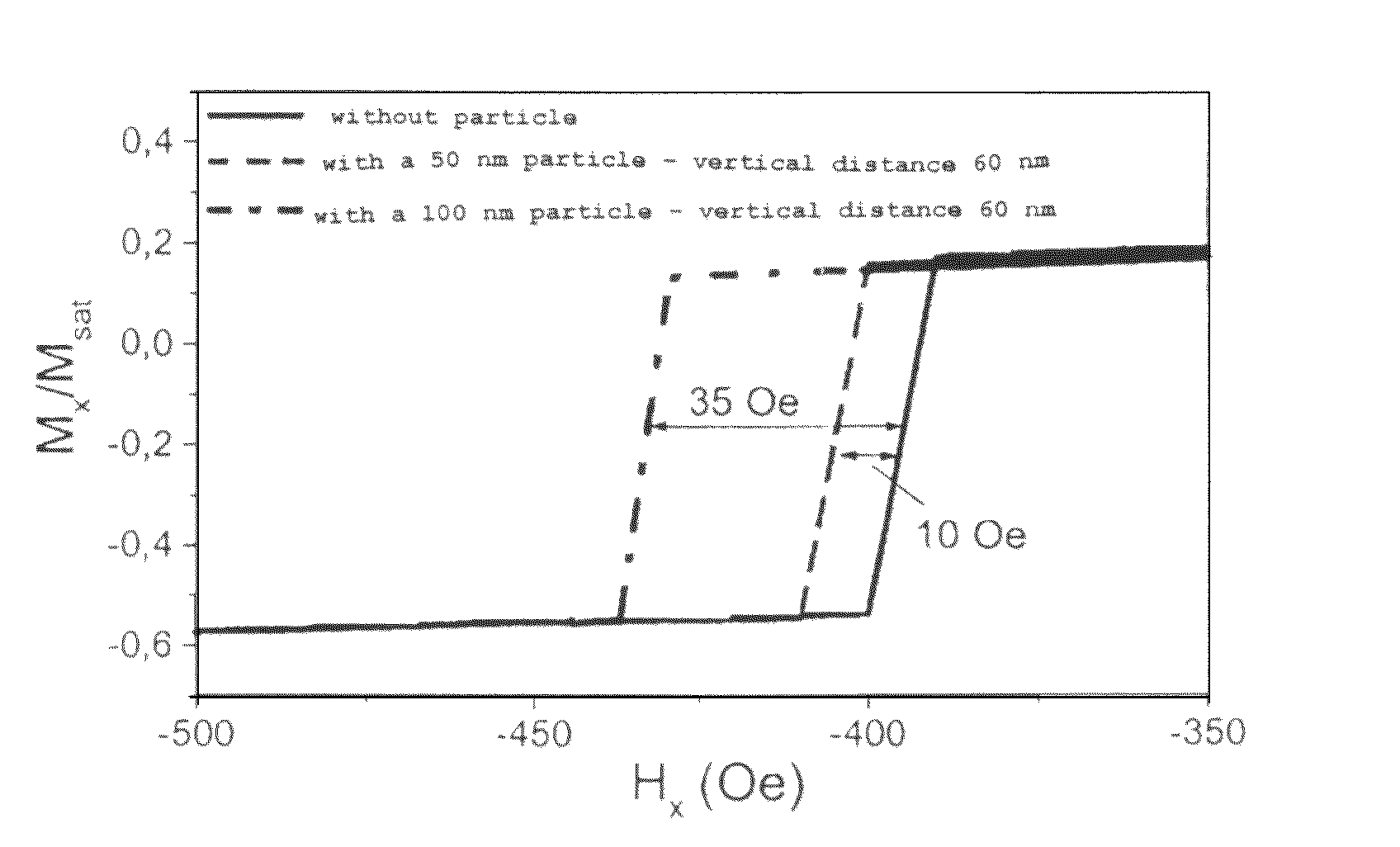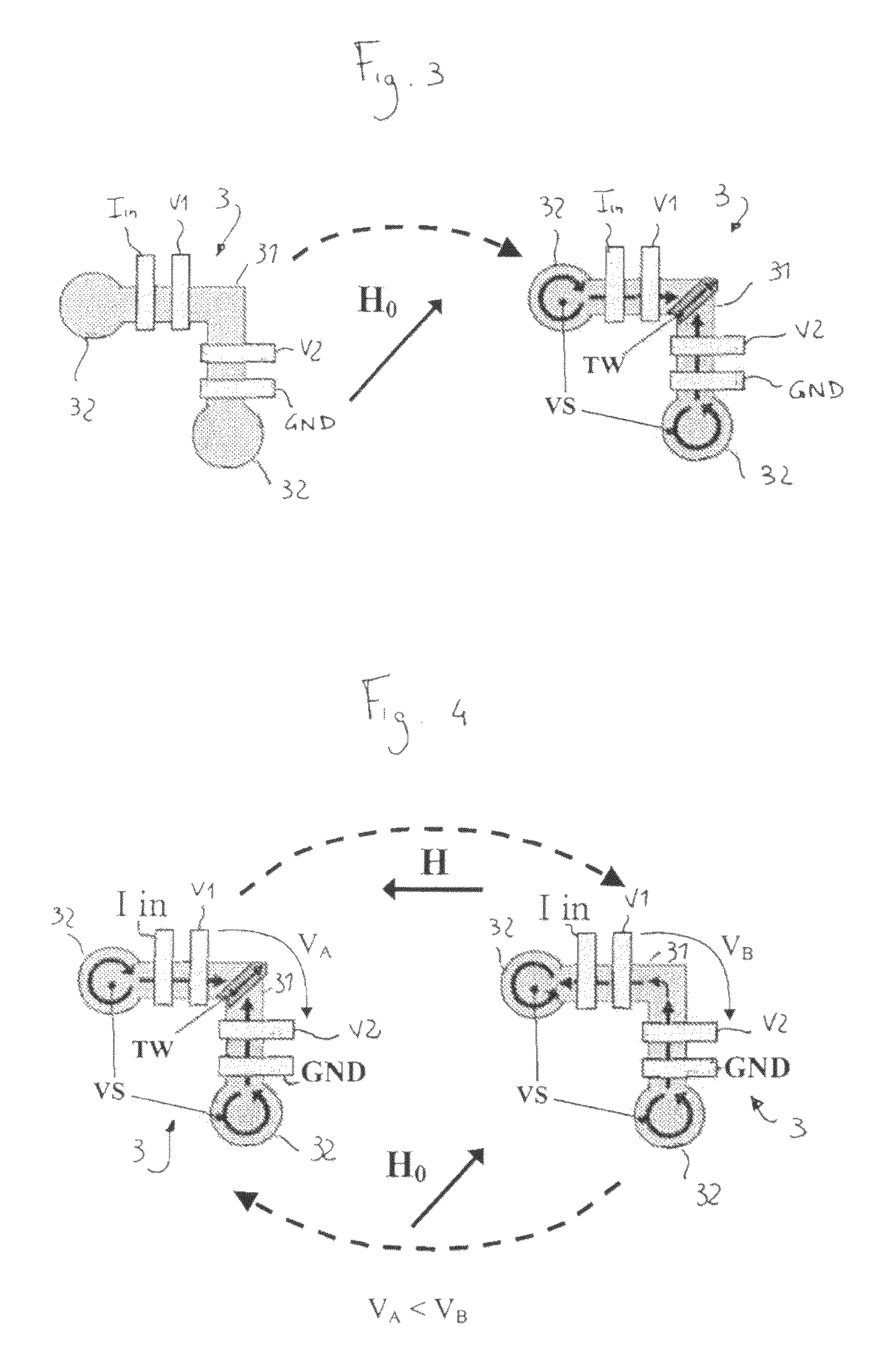Spintronic magnetic nanoparticle sensors with an active area located on a magnetic domain wall
a magnetic nanoparticle and active area technology, applied in the direction of magnetic field magnitude/direction, measurement devices, instruments, etc., can solve the problems of inability to count large numbers, inability to use suitable amplification methods, and high biological sensitivity, so as to achieve low detection limits, effective detection and counting, and high predictability of the transition
- Summary
- Abstract
- Description
- Claims
- Application Information
AI Technical Summary
Benefits of technology
Problems solved by technology
Method used
Image
Examples
Embodiment Construction
[0033]The devices and the methods described in the scope of the present invention relate to nanostructures. Typically, the nanostructures are structures having at least two dimensions smaller than 1 μm (for example nanometric dimensions). Even though the exact boundaries of the nanostructure class cannot, actually, be defined by a particular numerical dimension value, such a class is however clearly recognizable by those skilled in the art.
[0034]The present invention relates to a sensor for detecting single magnetic nanoparticles and a sensor array for detecting a plurality of magnetic nanoparticles. As it will be more clear from the hereinafter description, the described sensor can be employed to perform single molecule detection and / or employed in systems for synthesis at a single molecule level and / or analysis at a single molecule level. The sensor array is employed for detecting the concentration of target molecules, to which magnetic nanoparticles are linked, as markers.
[0035]T...
PUM
 Login to View More
Login to View More Abstract
Description
Claims
Application Information
 Login to View More
Login to View More - R&D
- Intellectual Property
- Life Sciences
- Materials
- Tech Scout
- Unparalleled Data Quality
- Higher Quality Content
- 60% Fewer Hallucinations
Browse by: Latest US Patents, China's latest patents, Technical Efficacy Thesaurus, Application Domain, Technology Topic, Popular Technical Reports.
© 2025 PatSnap. All rights reserved.Legal|Privacy policy|Modern Slavery Act Transparency Statement|Sitemap|About US| Contact US: help@patsnap.com



